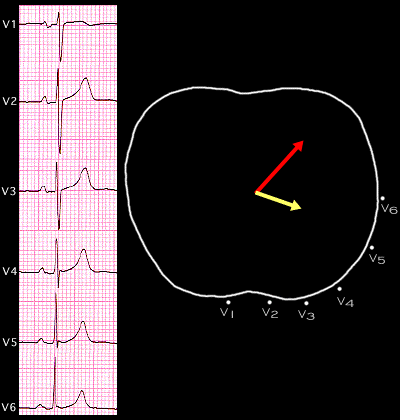
The normal T wave in the chest leads of adults is usually negative (inverted) in V1. It may be negative or positive in lead V2 and then becomes positive (upright) in leads V3-V6. As a result, the T wave vector in the horizontal plane (the yellow arrow) is more anteriorly directed than the main QRS vector (the red arrow) and, as shown here, the angle between the QRS and T wave vectors in the horizontal plane is wider than it is in the frontal plane.
